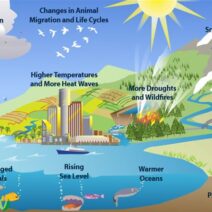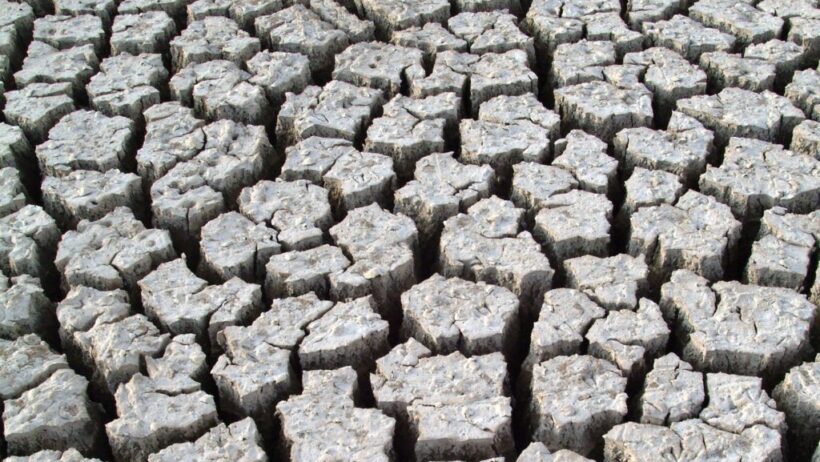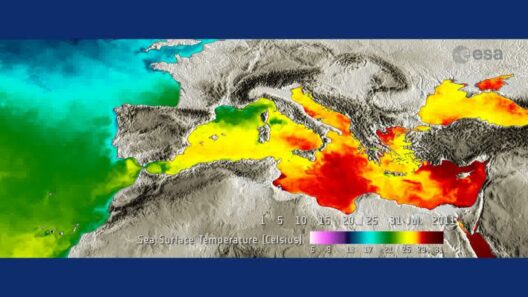Climate change is no longer a distant threat; it is a definitive reality reshaping our planet and our lives. The myriad impacts of climate change are profound and interlinked, affecting everything from weather patterns to biodiversity, and human health to economic stability.
One of the most conspicuous manifestations of climate change is the alteration of weather patterns. As global temperatures rise, the atmosphere holds more moisture, leading to increased precipitation in some regions while causing severe droughts in others. This fluctuation in weather extremes contributes to chaotic climate behaviors, including more frequent hurricanes and typhoons, intensified heatwaves, and a growing incidence of wildfires. The resultant upsurge in natural disasters has dire consequences, including loss of life, displacement of populations, and immense financial burdens on communities.
We cannot overlook the aquatic ecosystems either. The oceans are absorbing much of the excess heat and carbon dioxide generated by human activities. This has resulted in ocean warming and acidification, which has detrimental effects on marine life. Coral reefs, often referred to as the “rainforests of the sea,” are particularly vulnerable. Higher ocean temperatures lead to coral bleaching, a phenomenon that disrupts marine biodiversity and compromises entire ecosystems. Furthermore, fish populations are shifting their habitats to cooler waters, altering local fishing industries and food security for people who rely on them.
On land, we witness a grappling with biodiversity loss. Habitat destruction, coupled with changing climates, imposes a severe threat to numerous species. Many organisms are unable to adapt to the rapid changes, leading to extinction. The threat to biodiversity extends beyond aesthetic or moral concerns; it disrupts ecosystems that provide services essential to human existence, such as pollination of crops and water filtration. The decline in species diversity exacerbates food insecurity, as agriculture depends on the variety of species for healthy crop production.
As temperatures continue to climb, the melting of polar ice caps is yet another alarming consequence. Glacial decline contributes to rising sea levels, which impinges on coastal communities worldwide. The forecasted acceleration of sea-level rise portends a future where cities like Miami, New York, and Bangkok could face chronic flooding. Hence, coastal migration and potential conflicts over resources could become more prevalent, introducing additional stressors to governments and social systems.
Human health is intricately linked to climate change, with implications stretching from direct to indirect effects. The increasing temperature inherently precipitates a rise in heat-related illnesses and mortality rates. Moreover, climate change exacerbates air quality issues. Higher temperatures lead to increased ozone levels, resulting in respiratory problems and cardiovascular diseases. Coupled with the spread of vector-borne diseases—such as malaria and dengue fever, which thrive in warmer, more humid conditions—the public health landscape is shifting alarmingly.
The economic ramifications of climate change cannot be understated. Industries heavily reliant on natural resources—like agriculture, forestry, and fisheries—face existential threats. Crop yields are projected to decline as pests become more resilient in warmer climates. Consequently, food prices soar, disproportionately affecting vulnerable populations and leading to socio-economic turmoil. Moreover, the financial burden of climate disasters can cripple local economies, necessitating increased adaptation measures and funding.
Infrastructure is another crucial area impacted by climate change. Increased extremes in weather reveal the inadequacies of our current infrastructure, which is often ill-prepared to withstand new challenges. Roads are washed away in floods, power grids fail during heat waves, and buildings are compromised by intense storms. This necessitates a reevaluation of current urban planning paradigms, pushing for resilience against climate-induced eventualities.
The agricultural sector is undergoing transformation in response to climate shifts as well. Traditional farming practices are threatened by erratic rainfall patterns and increased drought. The reality is the potential for food shortages and greater reliance on climate-resilient crops, necessitating a paradigm shift in agricultural practices and food systems. Innovations in agriculture—such as permaculture and agroforestry—could hold keys to sustainable practices that enhance soil health and ecosystem stability.
Climate change also has socio-political dimensions. Displaced populations, known as climate refugees, face political and logistical challenges as they seek new homes. Resource scarcity may aggravate conflicts, especially in regions where water supply becomes inadequate. This polemical landscape poses severe challenges to national and global governance structures, pushing for international cooperation in addressing these pressing issues.
In summary, the effects of climate change are vast and interconnected, touching every facet of life on Earth. Addressing this multifaceted crisis requires not only immediate action to mitigate emissions but also comprehensive strategies to adapt to the new realities imposed by a warming planet. Awareness and education are paramount; understanding the complexities of climate change can galvanize collective action and innovation, ensuring a sustainable future for generations to come.
Faced with the enormity of climate change, it is imperative to consider the diverse ramifications while fostering an attitude of resilience and proactive engagement. Collaboration among nations, communities, and individuals is essential to not only confront but also to thrive amid the challenges posed by a changing climate.







